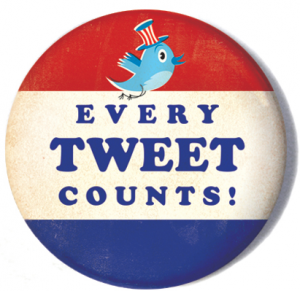The presidential election season is heating up as new candidates declare their intentions to run for America’s most powerful government position. Although the 2016 election is still a year and a half away, those aspiring for the position of Commander in Chief must being hitting the campaign trail early in order to fundraise for their campaign as well as build momentum heading into the primaries. Campaigns have drastically changed just within the last few elections, as new ways of reaching voters has gone mainstream replacing traditional concepts.
Just as businesses are always looking for the latest ways in reaching consumers, politicians are doing the same exact thing, as many political strategists would consider their campaign, a marketing platform where reaching voters with effective content is the key. The key demographics that are more likely to vote are the older ones, especially those 35 years and up. These individuals grew up in an age without social media for the most part, and without the technological innovations out there today such as smart phones, tablets, etc. These older adults are more likely to read the newspaper, watch television, or listen to the radio, over younger generations who are constantly on the go, relying on their smart phone and social media for news and information. Successfully reaching millennials, those born primarily in the 1980s to around 2000 and are old enough to vote, has been a major focal point for candidates as tapping into this demographic could drastically change the outcome of an election.
My opinion in relation to successfully reaching millennials, is rather than long winded content with tons of factual information and dialogue, candidates utilize the modern advertising techniques many businesses conceptualize work in reaching this younger voting demographic. That is, an active voice on social media, short talking points that can be summed up in a few sentences, dialogue that not only addresses a range of important issues, but also how these issues relate or have an effect on millennials. Efficiently using social media, such as YouTube, Twitter, and even Instagram can have a profound result as the majority of young voters don’t read the newspaper, or pay attention to commercials and political debates (Nienstedt, 2015). When doing this, candidates must make short and concise points that stick out, they are essentially making a pitch. Keeping this in mind, it is beneficial to think of the 6 factors in the book, Make It Stick, where you want to focus your message with the key criteria: simplicity, unexpectedness, concrete, credible, emotional, and storytelling (Heath & Heath, 2008). In using this strategy and criteria, candidates are much more likely to appeal to millennials, and make sure their ideas stick out in their minds. An example I liked, was Hilary Clinton creating a LinkedIn profile and then including a brief post saying she was looking for a job (Zillman, 2015). This was a brilliant strategy as it played to many of the factors from Make it Stick and has been widely talked about across social media and throughout the news.
The last point I wanted to make on this subject of marketing communications towards young voters, ties into the aspects of storytelling and emotions, and that is to tie in how a particular issue effects you as a voter. People are looking for personable information, and marketers or in this case political strategists should aim their content in such a way that requires a response from millennials, and that response in this situation is to buy into a particular candidate and vote for them.
http://cerc.net/2015/04/10/dont-read-all-about-it-reaching-the-millennial-voter/

